Iran's Ebrat Prison Museum: Unforgettable Tehran Visit
Have you ever wondered how a site of oppression can transform into a space of remembrance? Visit the Ebrat Museum in Tehran, Iran.
Once a site of countless illegal incarcerations and unimaginable suffering, the Iran Ebrat Museum is a striking edifice with detention wings attached to a circular inner courtyard that reaches a skylight like a barred drum.
In the 1970s, it was run by the then-Shah's secret police, known as the SAVAK ("Sāzemān-e Ettelā’āt VA Amniyat-e Keshvar" or Organization of Intelligence and National Security.
Today, the Ebrat Museum invites visitors to explore its displays and dioramas, vividly recalling the atrocities endured by political prisoners. Mannequins staged in small cells, with bloody smears as haunting evidence of torture, evoke a profound sense of empathy.
Read on to learn more about the Ibrat Museum, including its history, torture methods employed, architecture, and how to visit and experience it firsthand.
About Iran Ebrat Museum
The Ebrat Prison Museum in Tehran offers visitors a glimpse into the harrowing days of political prisoners during the Pahlavi era. The museum showcases statues of prominent figures and prisoners, meticulously designed and constructed, along with displays depicting the conditions and torture endured by prisoners during that era.
It was constructed in 1932 under the orders of Reza Shah Pahlavi; this four-story earthquake-resistant building stands as the first modern prison in Iran. Housed within the Nazimiyeh complex, the museum was later utilized by the Joint Committee Against Sabotage during the Pahlavi II era, transforming it into the most feared prison in the country, where political prisoners were detained and subjected to torture.
What sets the Ebrat Prison Museum apart is that the museum guides were once prisoners in this very chamber, having experienced the sufferings firsthand. Listening to their personal accounts gives visitors a more authentic and tangible understanding of the past.
History of Ebrat Museum in Tehran
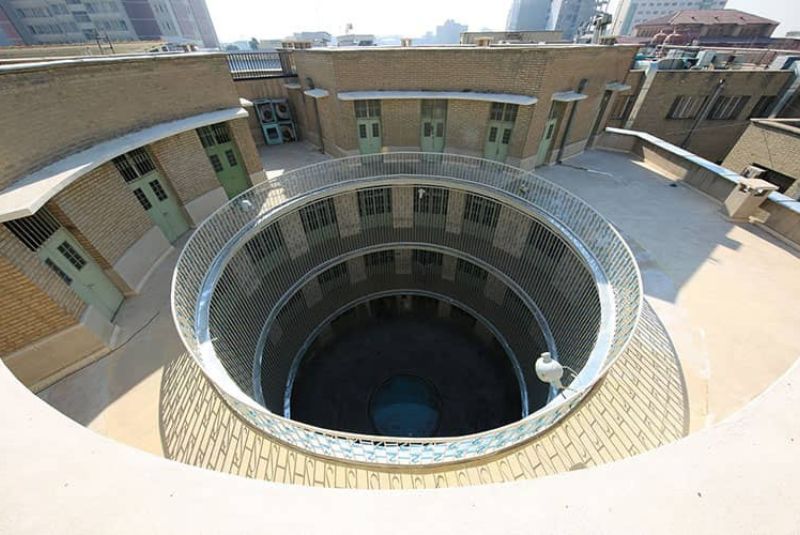
The history of the Ebrat Prison Museum is deeply intertwined with the tumultuous events that unfolded in Iran. Originally erected in 1932, the building served as the country's first modern prison, initially intended for the detention center of justice. Over time, its purpose shifted, evolving into the Provisional Police Prison and later becoming Iran's first women's prison by 1947.
In the 1960s, as the people's struggle gained momentum, the Pahlavi regime sought to suppress and intimidate the population. To counter the revolutionary movement, various military and security forces, including SAVAK, the police, army intelligence (Pillar II), and gendarmerie, were delegated the task of suppression. However, the lack of coordination among these entities prompted the regime's leaders to draw inspiration from the British intelligence system employed in combating the Irish Liberation Army. Thus, the Joint Anti-Sabotage Committee was established, aiming to centralize command and focus on the activities of these opposition groups.
In 1971, the committee commenced its activities, utilizing the present-day location of the Ebrat Museum as its main building.
Today, The Ebrat Museum documents the events that transpired within its walls with written and oral accounts utilized. Additionally, skilled artists played a crucial role in reconstructing the prison's atmosphere and depicting the crimes committed by the Pahlavi regime by creating numerous sculptures.
Finally, on February 8, 2003, the Ebrat Museum opened its doors to the public, serving as a stark reminder of a dark chapter in Iran's history.
Ebrat Museum Architecture
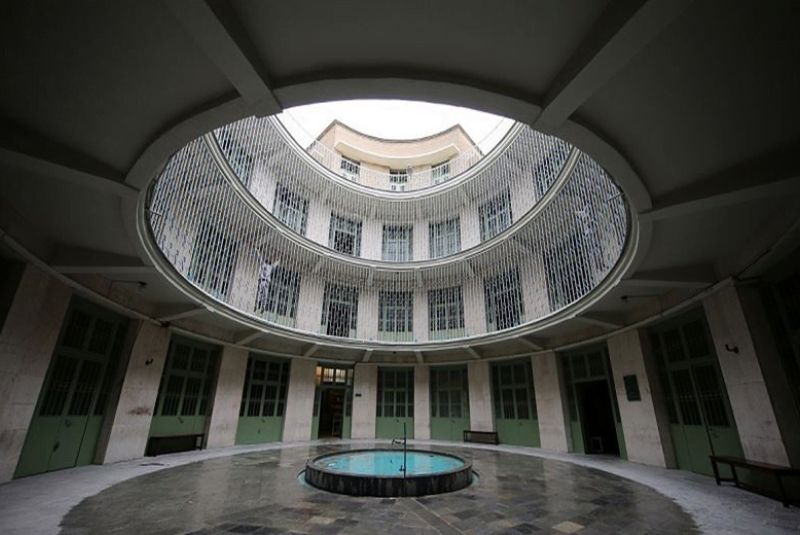
The Ebrat Prison Museum was designed and constructed by German architects. With multiple layers of protection, the prison was meticulously designed to prevent any possibility of escape. Prisoners who dared to try often found themselves trapped in a labyrinth of paths, unable to distinguish between entry and exit.
One intriguing aspect of the prison's architecture was its soundproofing. The designers ensured that no sound could enter or exit the prison, effectively concealing the existence of the Savak prison from the outside world for an extended period. Despite the absence of external noise, the anguished screams of the prisoners echoed within the prison's walls, intensifying their mental torture and demoralization.
Another notable feature was the sophisticated ventilation system. This system subjected the prisoners to extreme temperatures, making winters bitterly cold and summers unbearably hot. This deliberate manipulation of the environment further exacerbated the hardships endured by the prisoners, adding to their already challenging circumstances.
Different Sections of the Ebrat Museum
The Ebrat Prison Museum is divided into several distinct sections, each offering a unique glimpse into the harrowing history of the prison and the experiences of its inmates.
Entrance Hall
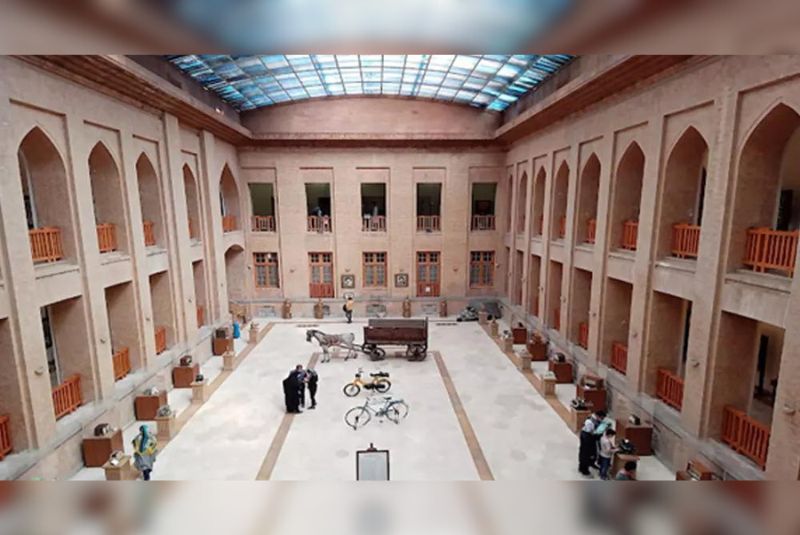
As visitors enter the museum, they are greeted by the sight of the SAVAK agents' cars that were used for chase and arrest. Peugeot vehicles were employed for arresting ordinary citizens, while bulletproof Benzes were reserved for those involved in armed and guerrilla activities. The museum also houses the limousines used by General Hossein Fardoost, the head of the Special Intelligence Bureau and the third head of SAVAK.
In the entrance hall, plaques adorn the walls, displaying the names, arrest dates, and occupations of combatant prisoners. These plaques bear witness to the formation of the torture chamber and the Joint Committee Against Sabotage of SAVAK and the police, where approximately 4,004 people were arrested and subjected to torture.
Officer Guard's Room
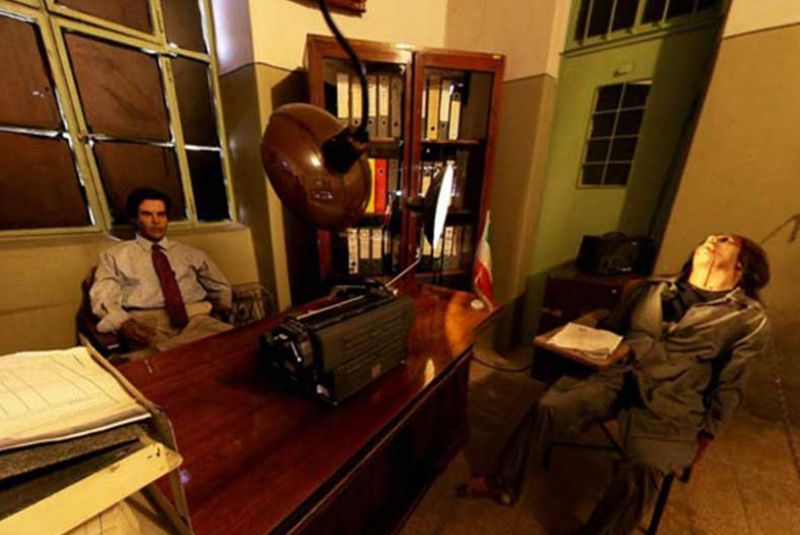
Photographer House
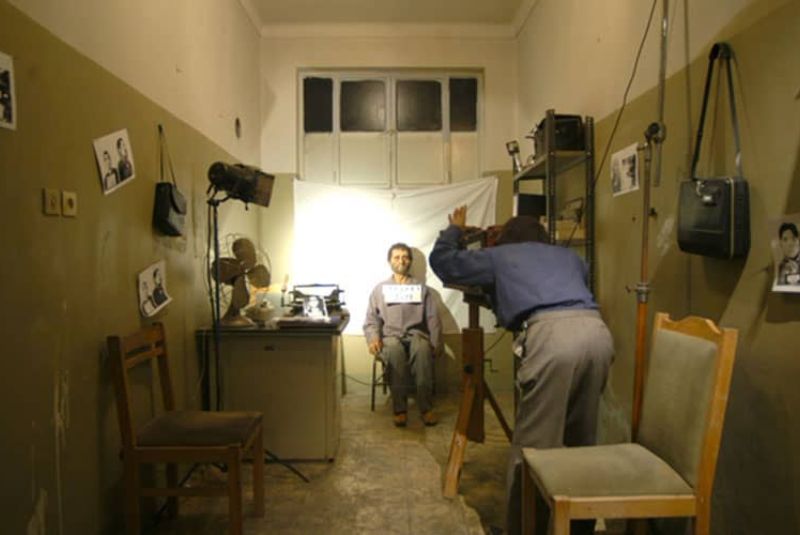
Within the museum, there is a photographer's house where prisoners underwent photography sessions for their files. This process involved placing a description sheet on the prisoner's body before capturing the image.
Public and Individual Cells
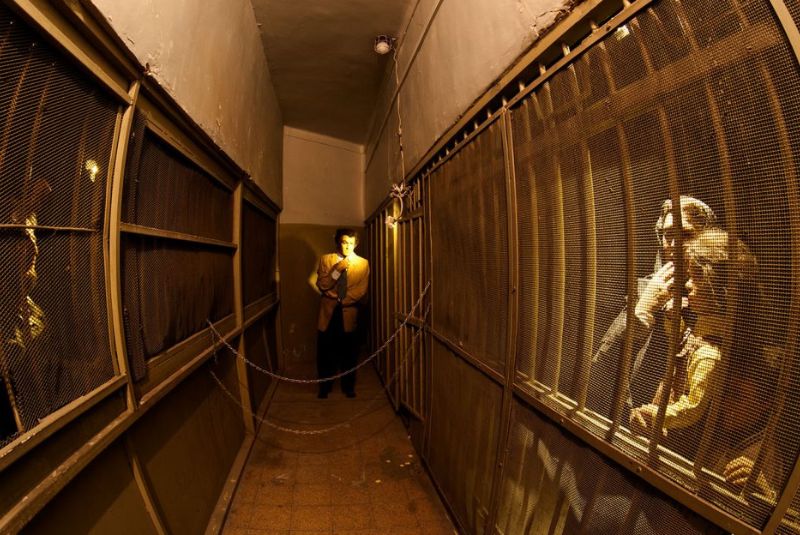
The prison's cells are divided into individual and public sections. The circular four-story building houses 86 solitary cells and two general wards with 18 30-meter cells, accommodating approximately 250 prisoners. However, during critical periods such as 1978, the number of prisoners exceeded capacity, leading to overcrowding and even more challenging conditions.
Blood-Soaked Bathrooms
The museum also displays the bathrooms where prisoners had limited bathing time every four hours, with blindfolded movements and guidance from fellow prisoners. The cells were equipped with only a workshop heater, which lacked a chimney, causing smoke to fill the space and blacken the walls.
Torture Chambers
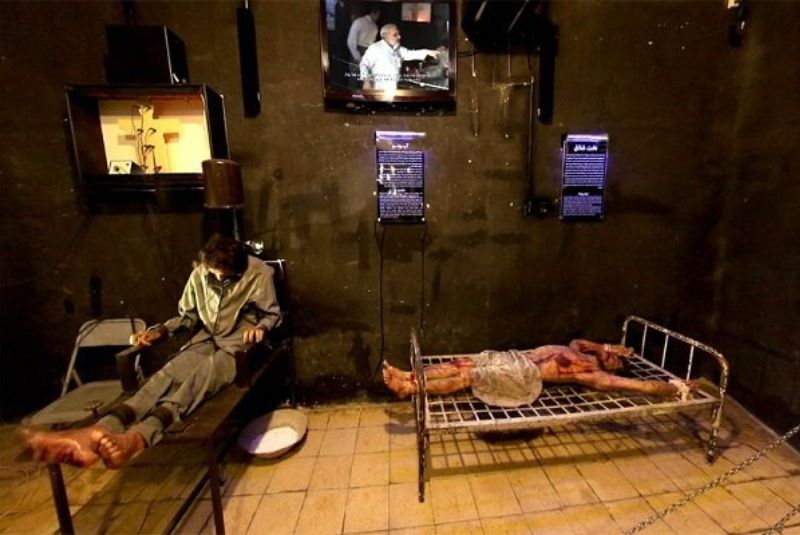
Moving deeper into the museum, visitors encounter the torture chambers, where symbolic figures depict the various forms of torture inflicted on political prisoners. Electric cables, shocks, and other implements were used, totaling over 79 different methods. Notably, one infamous torturer was Mohammad Ali Shabani, known as Dr. Hosseini, who lacked literacy but was skilled in the art of torture.
Dressing Room
The dressing room, located on the ground floor, continued the prisoners' torment. Here, their wounds were treated without anesthesia, deliberately causing additional pain by removing bandages soaked in dried blood.
Visitation Site
Another section showcases the visitation sites for prisoners, allowing limited contact with their families under the watchful eye of a guard. Not all prisoners were granted visitation privileges, but for those who were, this space provided a momentary respite.
The Warden's Room
The museum also features the warden's room, which was equipped with communication devices and served as a hub for the SAVAK Joint Anti-Sabotage Committee's operational plans and reviews.
Celebrity Strap
A section known as the Celebrity Strap introduces notable prisoners, including statues of Shahid Beheshti, Shahid Ghodousi, Ayatollah Taleghani, Shahid Rajaee, and others.
Memorabilia Rooms
Memorabilia rooms hold artifacts from the prisoners, such as a small vase crafted by Ms. Tahereh Sajjadi using bread dough while in prison. The vase is adorned with a rose painted with aspirin tablets and black sections stained with soot from petroleum heaters, symbolizing the resilience and creativity of the prisoners.
The museum also pays tribute to political prisoners through photographs and names displayed in Ward 3, serving as a permanent memorial.
Pahlavi Family Introduction Room
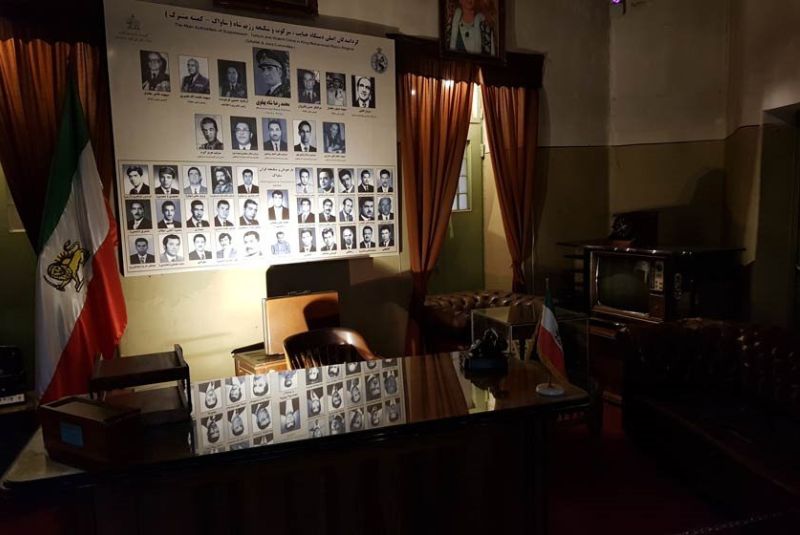
In a separate room, visitors can explore the Pahlavi Family Introduction Room, which presents photographs and information about the Pahlavi family, providing deeper insights into their lives.
Gun Room
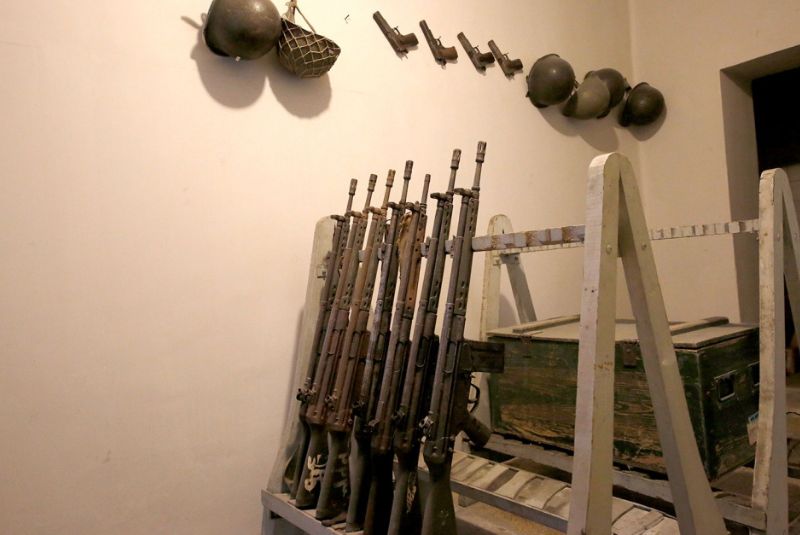
Lastly, the Gun Room showcases weapons, military equipment, and spy tools utilized during that era, offering visitors a closer look at the historical context.
Where is the Ebrat Museum?
The Ebrat Prison Museum is conveniently situated on the north side of Imam Khomeini Square, precisely on Yarjani Street.
How to Get to the Ebrat Museum?
To reach the Ebrat Prison Museum, start by making your way to Imam Khomeini Square. You can reach the square conveniently by taking the urban subway or driving in a private car. Once you arrive at the square, proceed towards the north side and follow Yarjani Street. The museum is located on this street.
Attractions Nearby Ebrat Museum
The Ebrat Prison Museum is surrounded by various attractions within close proximity. The Communication Museum is just 190 meters away, while the Malek National Library and Museum are 350 meters away. The National Garden Entrance and the National Museum of Iran can be reached within 350 and 400 meters, respectively. Si-e Tir Street is approximately 550 meters away, and Park City is located at a distance of 950 meters.
Ebrat Prison Museum Opening Hours
The Ebrat Prison Museum is open every day of the week, including Fridays. During the first six months of the year, visitors can explore the museum from 9 am to 1 pm and from 2 pm to 5 pm. In the second six months of the year, the museum welcomes enthusiasts from 9 am to 12 pm and from 1 pm to 4 pm.
Ebrat Museum Tickets Price
The ticket prices for the Ebrat Prison Museum are 3000 Tomans for Iranian nationals and 10,000 Tomans for foreign nationals.
Does Visiting the Ebrat Museum Have an Age Limit?
The Ebrat Prison Museum has an age limit policy. Due to the nature of the exhibits, the museum is not deemed suitable for children and students below the age of fifteen.
Bottom Line
The Ebrat Prison Museum stands as a poignant testament to the dark history of political repression in Iran. With its detention wings and circular courtyard, the museum offers a vivid portrayal of the suffering endured by countless political prisoners during the era of the SAVAK. Through its displays and dioramas, visitors are immersed in the harrowing experiences, evoking empathy and a deep understanding of the atrocities that took place within its walls.
Share your story!
Comment below and let us know about your Experience.
Your story inspires others!


Comment
Leave a Comment